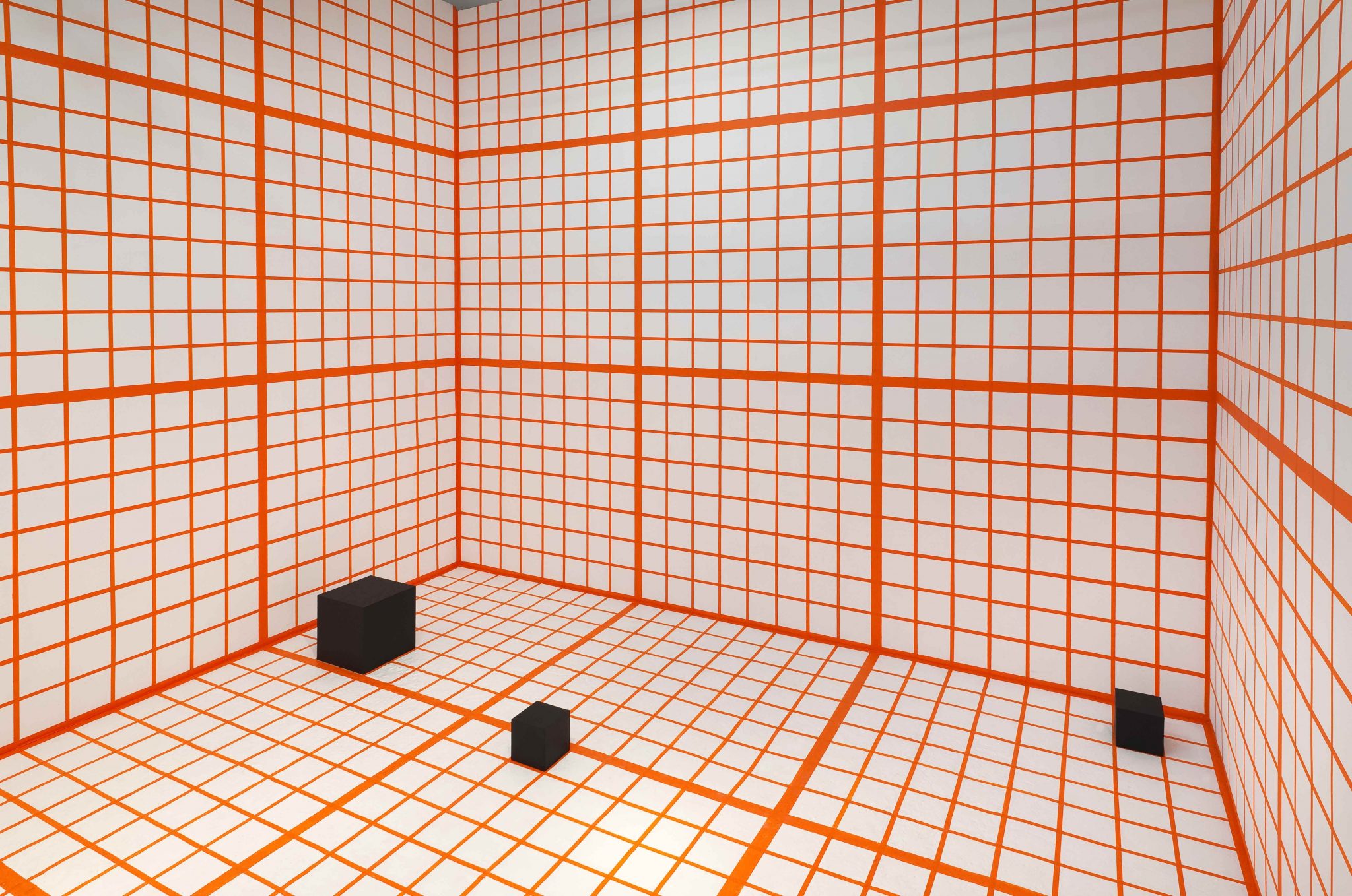01000011 01101000 01100001 01101110 01101110 01100001 0100000 01001000 01101111 01110010 01110111 01101001 01110100 0111101
The above is ‘Channa Horwitz’ in binary. With enough ones and zeros we can code the world. Binary is the reduced language of computers: any picture can be pictured, any poem uttered, any song sung, if only coded just so. Notations like binary provide order to an unkempt universe: they simplify, grid-out and impose logical, rational order. Modernity doesn’t truck with gods and saints, only mathematics and geometry, numbers and grids.
‘The grid is an emblem of modernity by being just that: the form that is ubiquitous in the art of our century,’ wrote Rosalind Krauss.
Channa Horwitz has long translated song and dance into a system of intersecting lines and blocks of colour. This dancing and moving under a set of directives makes for drawings with a spare beauty. In this show, all of those abstractions have aggressively inserted themselves into reality. Standing in the gallery, gridded by Horwitz’s orange lines, with black blocks placed neatly into a few squares, you feel that aggression, the dreams of a mathematician’s purity laid over the real world. Noise invariably enters; no line is perfectly straight. But the attempt at order is convincing enough. The clarity of the encompassing abstraction imbues you with a certain cleansing joy.
A grid is an attempt to flatten, to understand, to reduce labyrinthine complexity into the stretched lines of intersecting parallel bars. This reduction is violent. We might jig in front of Mondrian’s Broadway Boogie Woogie (1942–3), but its dance is that of pure, forceful progress – the straight lines of street grids laid out by planners, rather than the organic paths beaten out by horse carts and human feet. Those hard roads lead to the lusted-over speed of futurist manifestos, the obliterating juggernaut of a mechanised age.
Fly over the world, especially America, and the landscape is more gridded map than undulating topography. Crossing even the wilderness we see in our head the map we are traversing with each footstep. On our smartphone, all those binary bouquets of ones and zeros find form – just pinch to zoom. But if notation can obliterate difference, it can also invite explorations. The reduction teases out freedom. Other civilisations may have looked over the emptiness of unmapped territories and longed to fill them in, to grid them out. This one now sees grids and yearns to destroy them with lived experience, to puncture their purity with the wet slap of lived experience, the messiness of subjectivity.
Standing in Horwitz’s installation and looking at yourself is a start, but it’s best to see someone else to fully understand it. Look over at your friend, in his socks, standing on the lines crisscrossing the stark white floor, and with all the noise stripped away, he looks beautiful in his uneven humanness, his distinct personality made more powerful by its singularity in the stripped- down harmony of this compelling pattern.
Krauss wrote that the grid wiped it all away, but the grid really only provided parameters, lines to cross, planes to traverse, abstracted countries to discover. Though Horwitz’s notation predates the current ubiquity of binary, you feel all the strange possibility of it when crossing, in stockinged feet, these coded abstractions. All that falls out of these notations reveals itself more beautiful against the simple grace of her specific order.
The artist Channa Horwitz passed away at the age of eighty shortly after this review was written.
This article was first published in the Summer 2013 issue
